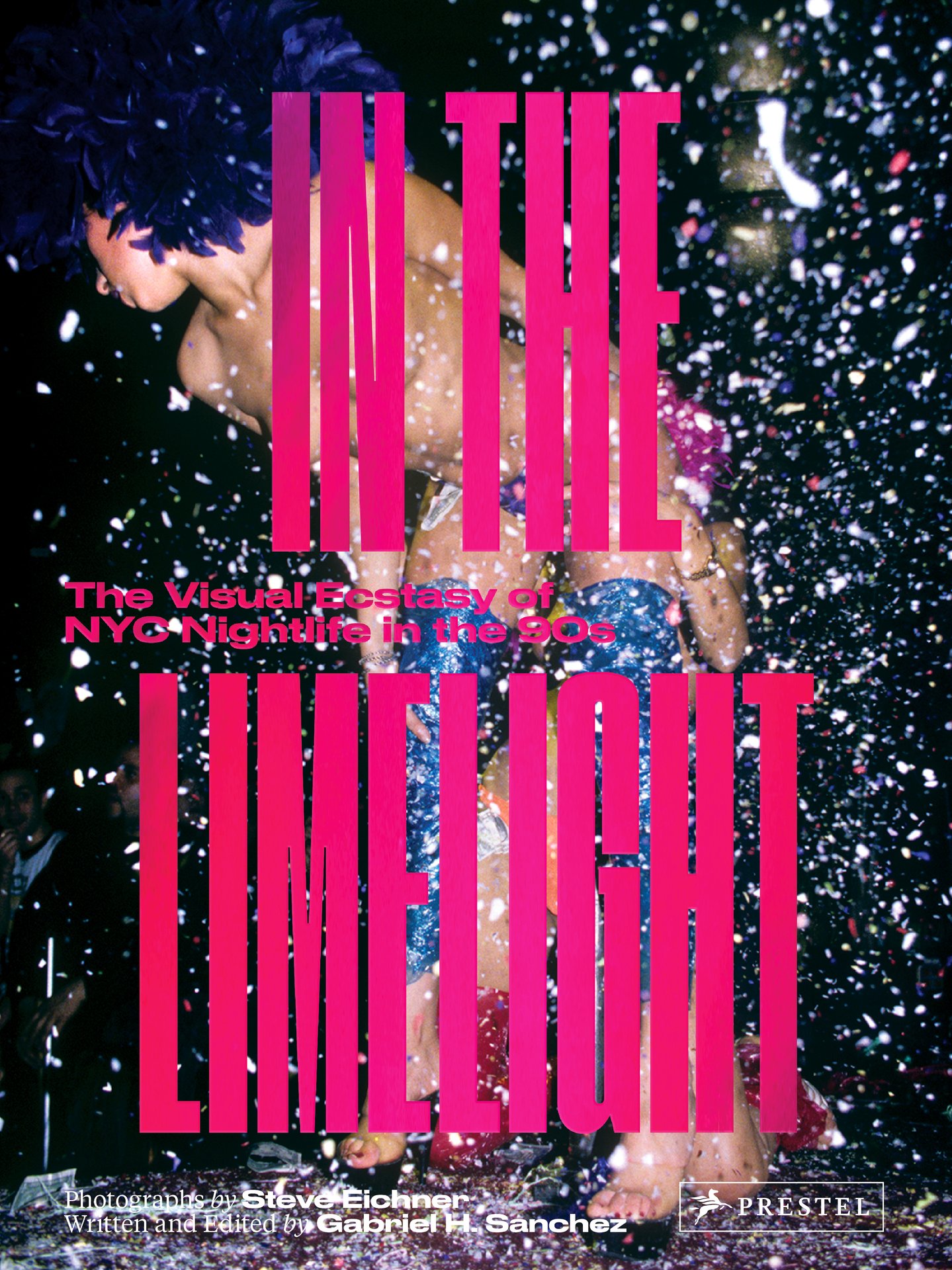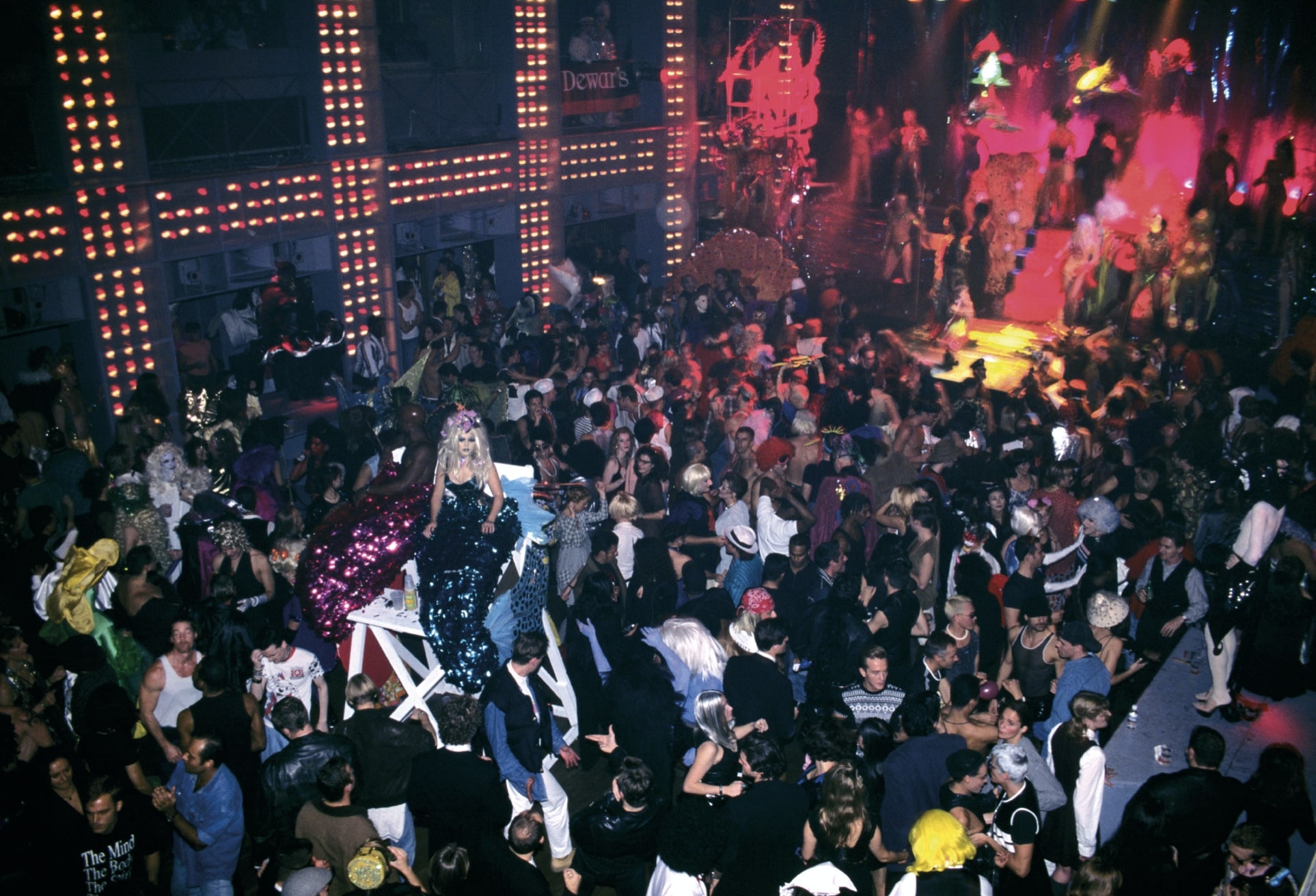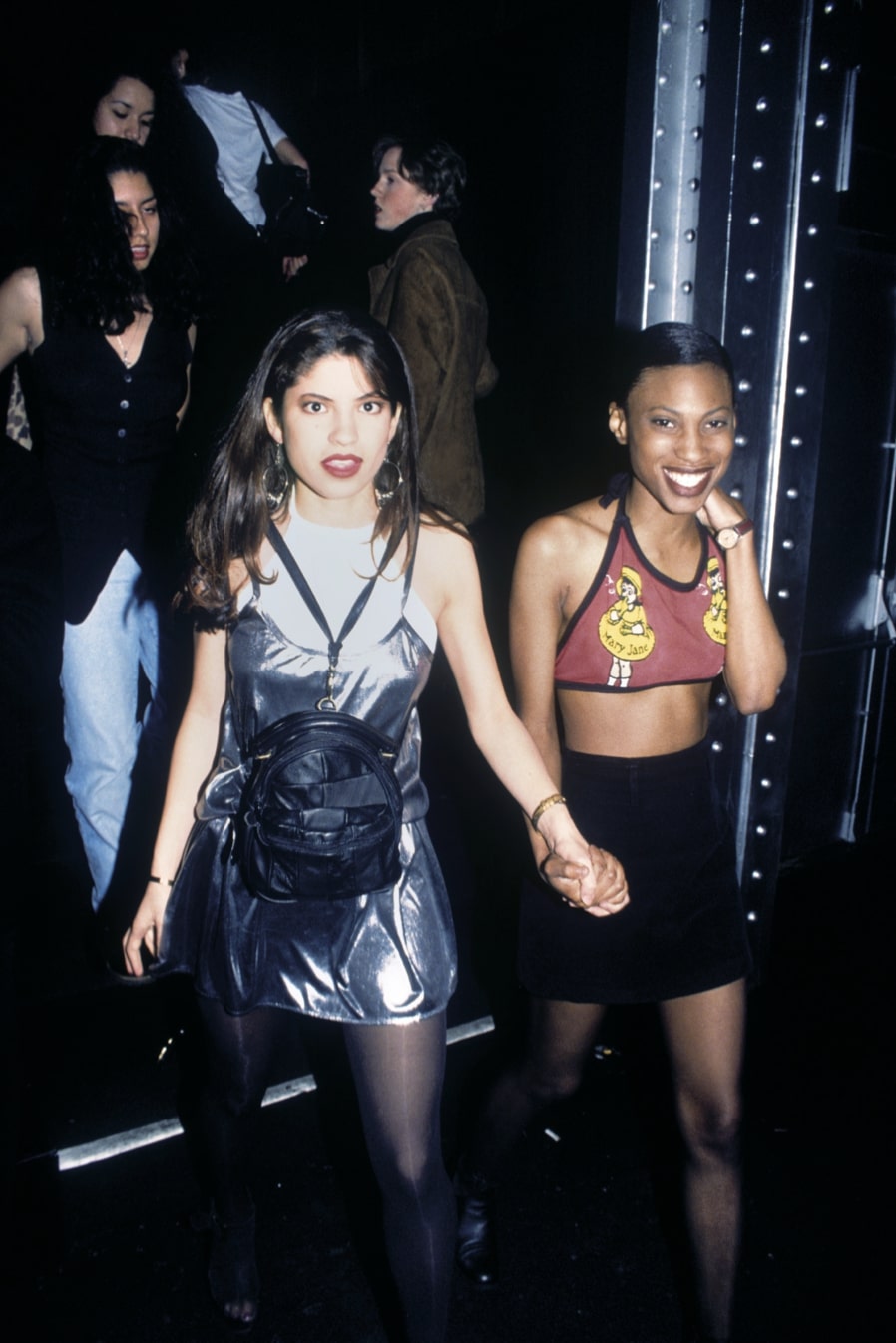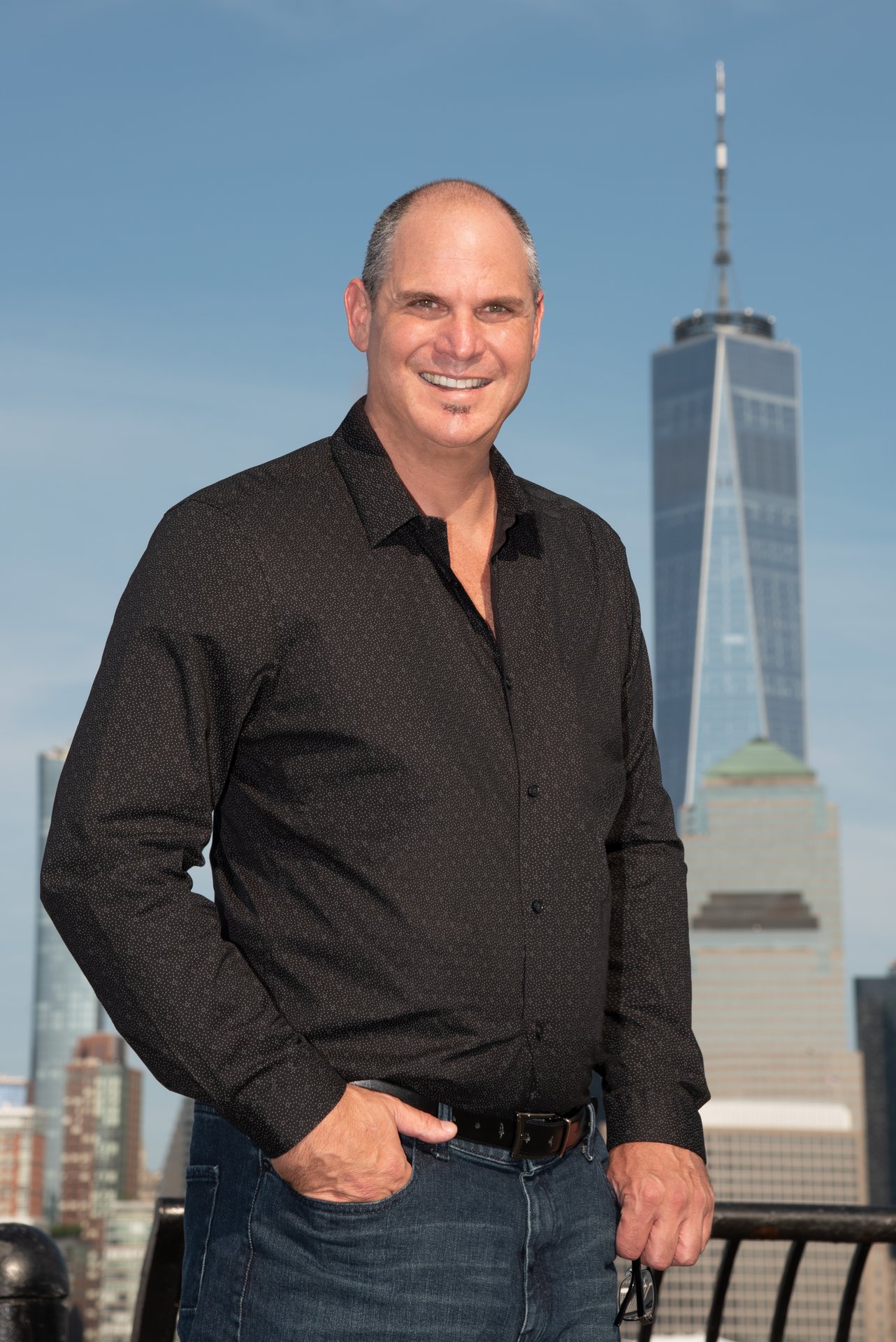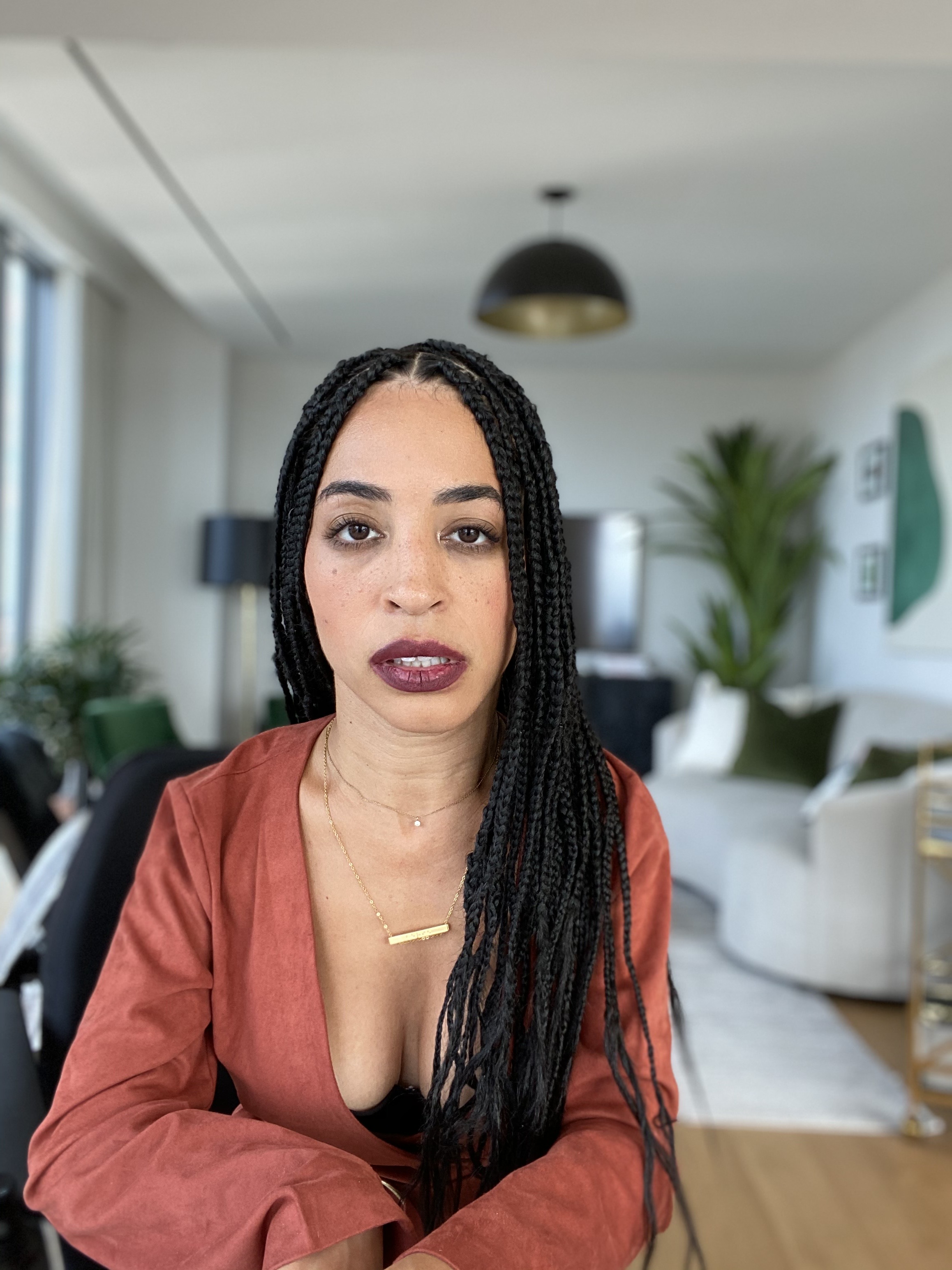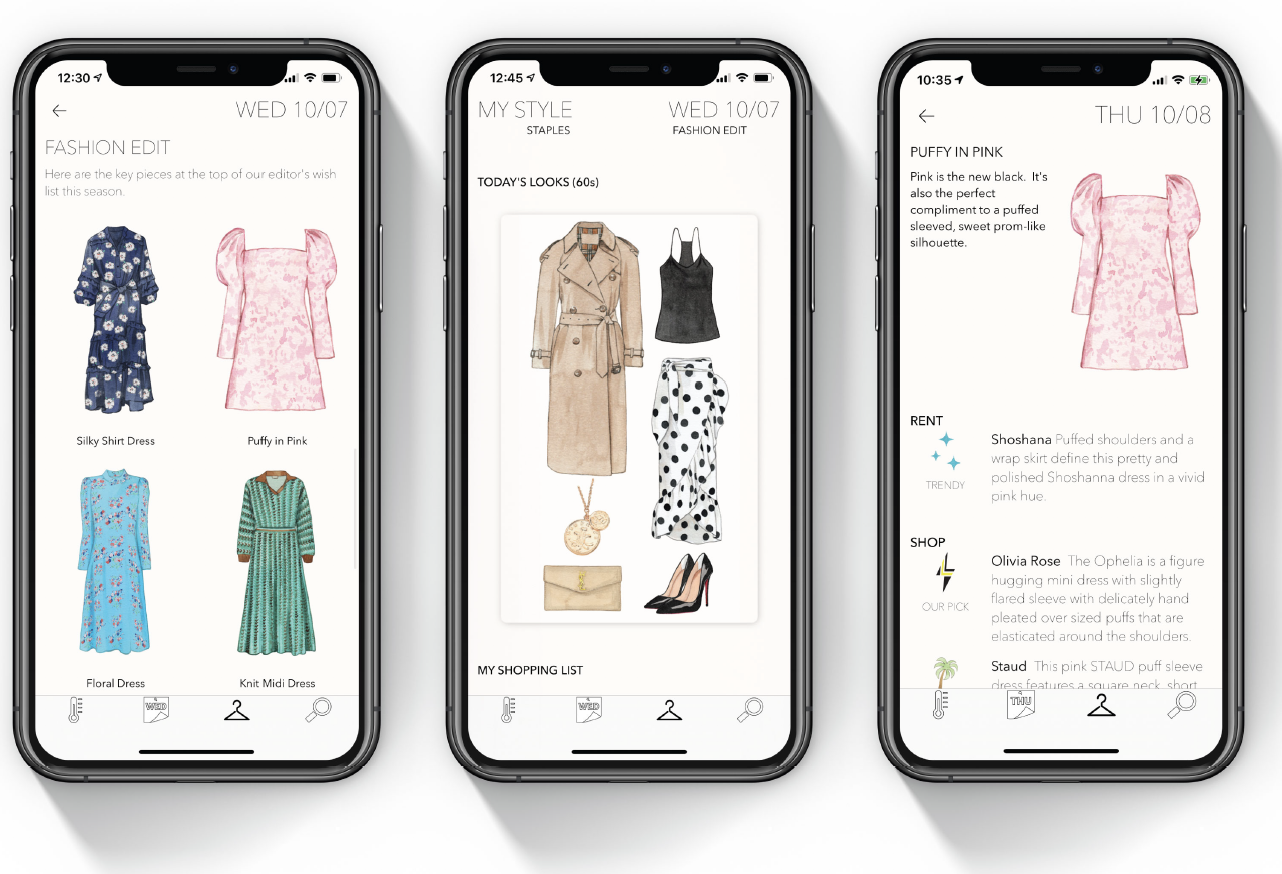Tell me a bit about your background and how you got into photographing the club scene.
I grew up in Long Beach, N.Y., and one of my first jobs was in a camera and electronics store. I learned all about cameras and how they worked, film, and developing. Photography became my hobby and I would go to concerts, bring my camera, and sit up as close to the stage as possible. I continued this through high school. I briefly studied accounting because my dad was an accountant, but I failed miserably. Luckily, I continued shooting and after a semester off, re-enrolled in college with a photography major. I excelled and graduated, then moved to Manhattan in 1987 with the sole goal of making a career in music photography. No safety net.
I stumbled upon the club scene by being out every night shooting bands. Some of the clubs doubled as concert venues. I met a club kid named Really Denise, then RuPaul and James St James, and I got a taste of the models and celebrities in the VIP area, like Naomi Campbell and Jean Claude van Damme. I started going to The Roxy and shooting for a nightlife magazine called Manhattan Lifestyles. I loved the club scene at first sight. As a young photographer, it had everything. I always loved to party and take photos and this was a way to combine both and make some money. So much color and energy and sexuality. Like nothing I had ever seen growing up on Long Island.
Then one night, I was shooting a Sugarcubes show and I met a woman named Michelle Feeney who had just been hired by Peter Gatien to do in-house PR for his clubs Limelight, Palladium and Tunnel (he went on to open Club USA as well). I gave her my card and a few days later she called and hired me. That’s how I met Peter Gatien and became his house photographer.
Describe the creative community of the early 1990s. What set them apart from previous eras?
The only thing like it before was Studio 54, but that was one club. The 1990s was the era of the mega-clubs and they were all over the city. In the 1990s NYC rents were affordable. Creative people could afford to live and thrive in the city. The mega clubs of the era were the primordial slime for this creative community to grow. They were a safe place for exploring sexuality, fashion, music, dance, and art. If you look at the photographs in the book, you can see how diverse the people in the clubs were. Each night I went to a different club with a new party theme and each night club kids dressed up in outrageous fashions and experimented with androgyny or cross-dressing or nudity. I think the 1990s were the first time that pushing the norms was accepted – the idea that we are all different but we can accept our difference and party together and feed off of that.
What made the clubs of the early 1990s so seductive?
The clubs were social media. If you wanted to raise your followers or build your brand you needed to go out. If you wanted to see what was going on or hear the latest music, the clubs were the place. If you wanted to meet someone to date or hook up, it was not happening in your apartment. Now you can sit in your basement or by the pool and still see what’s going on and even participate. Everything was happening at the clubs and there was something for everyone…Wall Street executives looking at Drag queens performing….celebrities dancing with kids from New Jersey. The interiors of the clubs were always changing. I never knew what to expect when I entered a club and the club kids pushed the limits of their makeup and clothing every night. The clubs were a safe-space for everyone to explore culture.
What was your favorite club of the time and why?
My favorite club was Club USA. Peter Gatien put everything he learned from his other clubs into this ultra-modern purpose-built mega club. I was already part of the Gatien Club Kids NY Nightlife family by then and I felt like it was my baby too. It was an adult playground complete with a slide. If the DJ started playing something you really wanted to dance to, you could slide from the VIP room right into the middle of the dance floor and get your groove on. It was super modern and felt like the center of the party universe and in fact, it was located in Times Square which is the center of the universe. The interior mimicked what was right outside the front door with neon lights, peep shows, and even an S&M room. Upstairs was a room designed by fashion designer Thierry Mugler. It had a cold feeling, a metallic industrial vibe with exposed steel girders and neon-lit bars. It featured a “stairway to nowhere” which was often used as seating or sucking face because no one knew what else to do on it.
What made that era so unique and special?
I think it was a finite time in history when NYC was affordable, the nightlife scene was not segmented, and people would flow from venue to venue, mixing and intermingling ideas. Experimentation was the norm and creativity was the language spoken. It was pre-social media so people were present and engaged. The cross pollination of music, dance, sexuality, art, business, and creativity of all sorts happened at that time.
